Graphics Reference
In-Depth Information
Let (a,b)
X
,
Y
denote the point a
X
+ b
Y
whose barycentric coordinates with respect
to the points
X
and
Y
are (a,b). Since P is linear when restricted to vertical and
horizontal lines,
=
(
)
Æ¢=
()
=
(
)
F
2313
,
F
P
P
F
2313
,
O,D
OD
¢
,
¢
=
(
)
Æ¢ =
()
=
(
)
G
2313
,
G
G
2313
,
C,E
C ,E
¢
¢
=
(
)
Æ¢ =
()
=
(
)
H
2313
,
H
P
H
2313
,
¢
¢
F,G
F ,G
and
()
=
(
) (
)
+
()()
=
(
)
+
()
=
P
F
23
P
O
13
P
D
231 131 1
()
=
(
) (
)
+
()()
=
(
)
+
()
=
P
G
23
P
C
13
P
E
231 13 4 2
()
=
(
) (
)
+
()()
=
(
)
+
()
=
P
H
23
P
F
13
P
G
231 13 2 43.
It follows that we can compute p(1/3) by applying the linear condition to P three times,
once each to compute P(
F
) and P(
G
) with respect to the segments [
O
,
D
] and [
C
,
E
],
respectively, and then once to the segment [
F
,
G
]. Note that because of the symmetry
of the function P we could have also used the segments [
O
,
C
], [
D
,
E
], and [
I
,
J
]. Note
further that P is not linear on the diagonal segment [
O
,
E
]. For example,
H
=
(2/3,1/3)
O
,
E
but (2/3,1/3)
O
¢,
E
¢
= 2 π
H
¢.
Next, suppose that P is the blossom of a polynomial function p as in Theorem
11.5.2.1 and that s and t are fixed
distinct
real numbers. If u Œ
R
, then let (a
0
,a
1
) be
the barycentric coordinates of u with respect to s and t, that is, a
0
and a
1
satisfy
u
=+
a s
a t
and
a
+=
a
1.
0
1
0
1
It is easy to check that
tu
ts
and
-
-
us
ts
-
-
a
=
a
=
.
0
1
Define
b
i
r
()
=
uPu
( ,..., , ,..., , ,..., ).
144144123
us
st
t
(11.88)
r
d
--
r
i
i
Notice that
()
=
(
)
=
d
()
pu
Pu
,...,
u
b
0
u
.
In the computations that follow, keep in mind that since P is a symmetric function
we can permute its parameters
in any way we want without changing its value.
Expanding the first parameter gives















